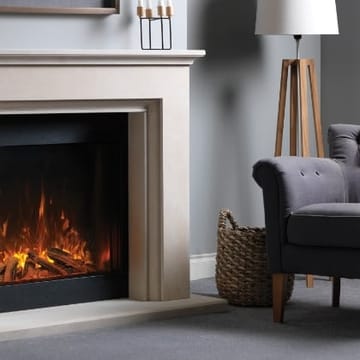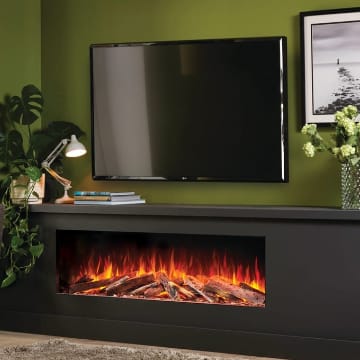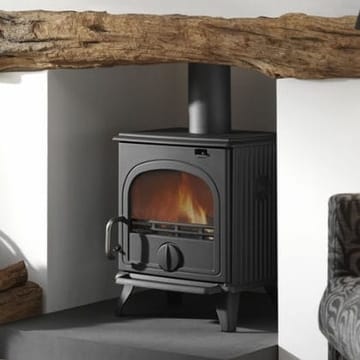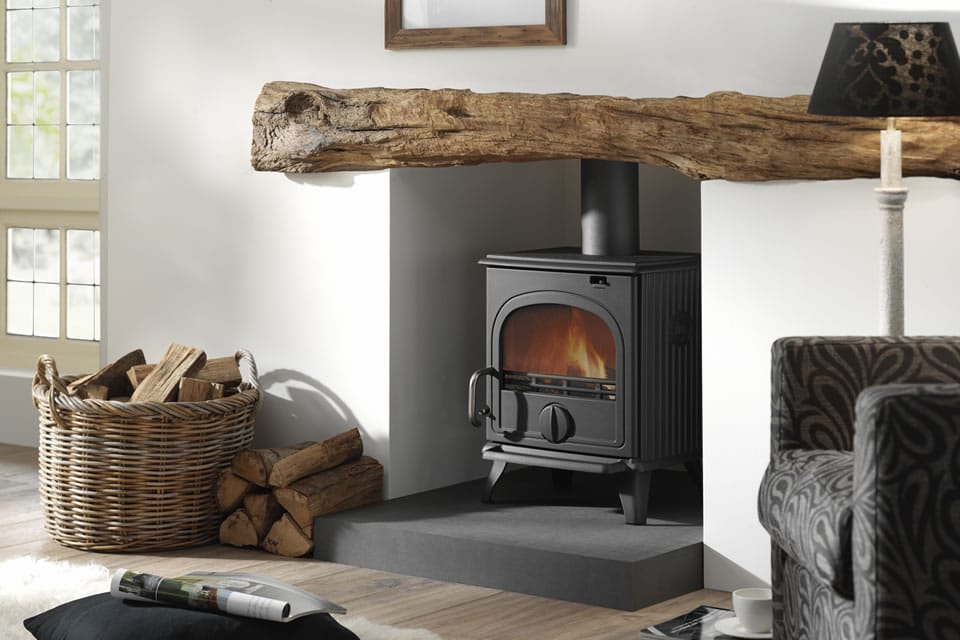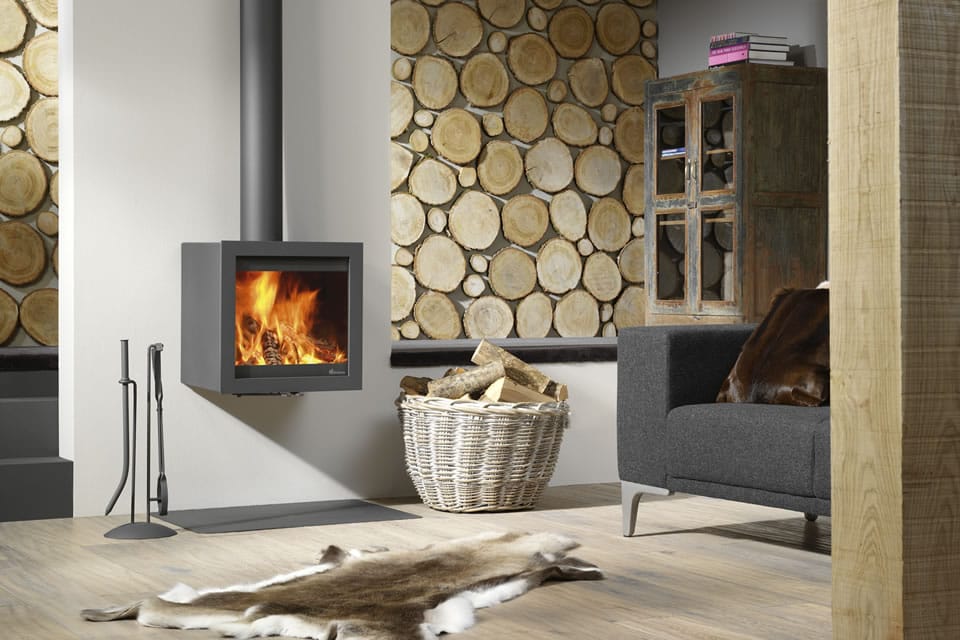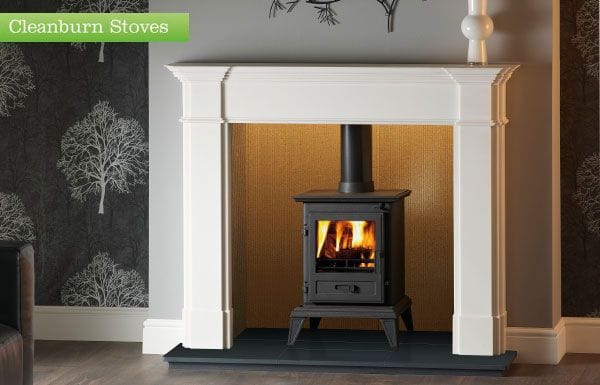A wood burning stove can be a great focal point in any room in your house, caravan, boat or even a garden shed, they look great and create a warm, cosy feel. Stoves also have a practical use; cutting heating bills especially if your main source of heating is oil or electricity.
Our guide to buying a stove should help you decide whether a stove is right for your home and your family's needs. It will also prepare you for the day you go out to a stoves showroom, helping you to know what to ask, what information the showroom staff will need, and what you should test before you buy.
Stoves can range in price from £500 to well over £2,000 depending on the type you want, whether you buy from online stores or from a showroom, and of course there is the fitting costs.
What you should consider when getting a wood burning stove
There are a few things you should think about before you buy a stove, in the long run it will save you money and make using the stove easier.
1. How many rooms does the stove need to heat?
Stoves are generally used to heat one room, but they can be attached to your central heating system allowing for all rooms to be heated by the one stove.
2. Do you live in a smoke controlled area?
The Environmental Service Department in your local council will be able to tell you if you live in a smoke controlled area.
www.gov.uk/smoke-control-area-rules
However, most people want to look after their environment and most stoves will be exempt. Check with Defra (Department for Environment, Food and Rural Affairs) for a list of approved smokeless fuels.
smokecontrol.defra.gov.uk/fuels.php?country=e
3. Will you have the time to light the fire and clean away ash?
It takes time to light a stove and some will need the ash cleaned out each time they are used. There are stoves that light automatically, usually pellet stoves, but they are more expensive.
Some multi fuel stoves can be run overnight, but wood burning stoves can not.
Then there is the chimney which will need to be swept at least once a year, preferably twice. The more expensive pellet stoves also need to be serviced once a year.
4. What type of fuel do you want to burn?
This may be dictated by the fuel available in your local area.
Wood is now considered carbon neutral as the amount of carbon given off whilst burning is the same as the amount of carbon it takes in whilst growing. Coal on the over hand is still considered less eco-friendly.
5. How much space do you have available to store fuel?
Many people forget about the storage requirements for the fuel they will be burning. You will need plenty of room, especially if you decide to burn logs stored in a dry area that is easily accessible for deliveries.
6. Is there a reliable fuel supply close to your home?
There may be factories near to you who are happy for you to take away items, such as wood, they no longer need.
There are a number of website that list local fuel suppliers.
7. Complying with Building Regulations.
All stoves must meet UK building regulations. For example, there are specifications around how the flue is fitted, the size of the hearth or the distance between the stove and combustibles. These can all affect the type of stove you will be able to buy.
www.planningportal.gov.uk/permission/responsibilities/buildingregulations/
Before you visit a stoves showroom or buy online.
All stoves have to meet the right European safety and efficiency standards for the UK. Make sure any stove you buy has the CE mark of approval.
Next you will need to choose the right stove for your room/home. This comes down to the heat output, which is measured in kilowatts (kW) and ranges from 2kW to over 15kW.
If a stove is too big it will overheat your room, you may end up opening windows or running the stove at a lower temperature, which will create more tar and smoke and be less efficient.
The size of stove you will need can be affected by:
- The size of the room - you'll need to measure the height, width and length of the room.
- The layout of the room and house and whether it is open plan or not.
- The size of windows and whether they are double glazed.
- If the room has insulation.
- The age of the property
You will need approximately 1kW of heat output for every 12 cubic metres of space if you want your room to reach a comfortable temperature of 21°C when it's 1°C outside.
As a rough guide, multiply the height, width and length of your room (in metres) then divide by 14. This will give you an estimation of the size stove you need in kW.
This is only a guide and shouldn't be used as your only source of information when buying a stove online. It is always best to get an approved installer to do a survey of your home before you buy, as they will correctly assess your room/home and chimney integrity.
Stove efficiency
In the UK building regulations require that all new heating appliances meet a minimum efficiency rating. For stoves this is 65%, if it incorporates a boiler it is 67%. The higher the percentage, the more efficient it will be, saving you money in the long run as you will not need to burn as much fuel.
Stoves are a good option as they have efficiency ratings between 60% to 80%, and boilers 80% to 90%. Compare this to an open fire with an efficiency rating of 32% and a gas fire at 20% to 50%.
Some stoves now come with a cleanburn system which means that air is introduced to the stove, helping to burn off more smoke and gasses, making them more efficient.
Which stove features do you need?
- Airwash systems - helps to keep the stove cleaner
- Controllable vents - allow you to regulate the amount of air in the stove.
- Movable stoves - some stoves swivel so you can direct heat where you need it.
- Double window - can be seen and heats two rooms at the same time.
- Ash pan size - how easy is it to access for cleaning purposes.
- Handles - are they easy for you to grip and turn.
Phoenix Fireplaces is one of the largest stoves and fireplace showrooms in Essex. Why not come along to our showroom to see the wide range of stoves available to you. We give advice and help where needed. We don't mind you testing the stoves as much as possible, we even have some stoves that are on so you can see how they burn and enjoy the heat created, especially during the winter months.
Further Reading
Pros and cons of wood heating systems
